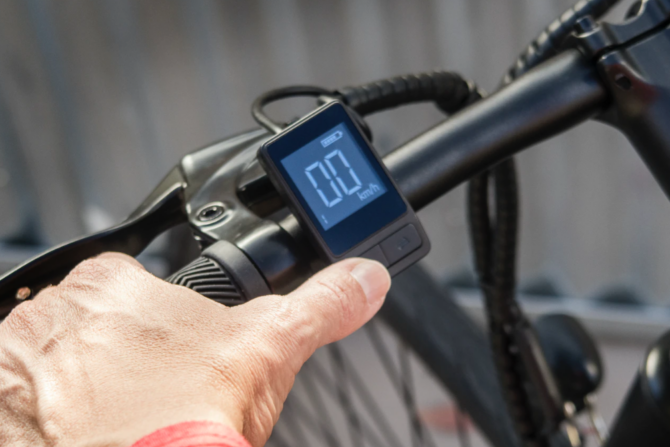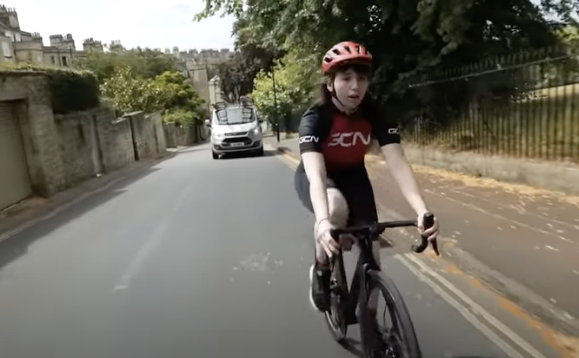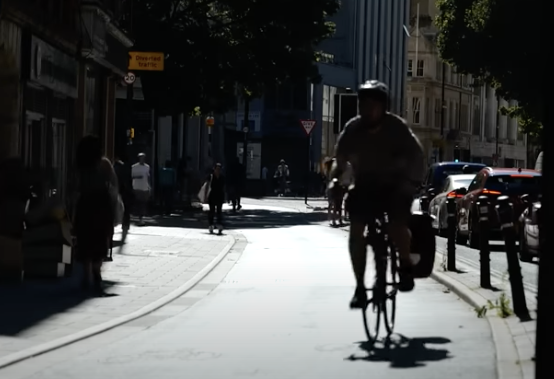From MomentumMag.com
In bustling bicycle-friendly cities such as Copenhagen and Amsterdam and many other cities worldwide, cycling is not just a mode of transportation; it’s a way of life. However, with the convenience, quality of life and health benefits of cycling come unique challenges, chief among them being the prevalence of theft, wear and tear, and inadequate bike parking facilities. In such environments, investing in an inexpensive “beater” bike for commuting emerges as a pragmatic solution to safeguarding against potential losses and inconveniences. And, really, seems a natural to help people from stressing too much about their bicycles while at work or play.
The Peril of Theft
One of the foremost concerns for cyclists in urban areas is the rampant theft of bicycles. Amsterdam, often hailed as a cycling paradise, like many urban centres around the world, also grapples with a high rate of bike theft. Despite the presence of large bike parking facilities that leave cyclists around the world in awe, security measures are just as lax as other areas, leaving bikes vulnerable to theft. The sad truth is that even the most robust locks cannot guarantee the safety of a valuable bike in such environments.
But that’s just the thing that Amsterdam and Copenhagen residents know but North Americans for the most part are still figuring out, many commuters opt for inexpensive “beater” bikes – sturdy, functional bicycles that serve their purpose without breaking the bank.
The whole idea of the “Dutch bike” isn’t something fancy and made special for Dutch bicyclists. It’s the idea of it being a simple utilitarian bicycles that looks like every other bicycle, is easy to operate and makes thieves basically keep on walking when they see it.
These bikes are less attractive targets for thieves due to their lower resale value, providing cyclists with a degree of peace of mind on two levels as they navigate the city streets. First, it is unlikely to get stolen compared to other more expensive models, and, second, if it does it is easily replaced.
Perhaps the name “beater bike” needs to change? Certainly, Dutch bike has a nicer ring to it.
Photo by Dovile Ramoskaite on Unsplash
From Road.cc
With the current cost of fuel and the omnipresent risk of wasting time sitting in rush hour traffic, you might be considering commuting to work by bike. We’ll presume you’ve already got the job to commute to, so now you need the bike for the job! That can be a bit of a minefield, so with the help of Trek’s FX range(link is external), here’s a look at some typical steeds that are ideal for the commute, and some top tips to get you on your way.
For many of us, with the right preparation commuting by bike is not only pretty easy, but also a more enjoyable and sustainable way to travel to work. It offers numerous benefits for your health and finances, and may even mean you can stay in bed a little bit longer.
Commuting by bike is a great way to get out in the fresh air and maybe even contribute to maintaining your fitness. Another positive of commuting by bike is that you can generally get closer to the office than in a car. There’s not many people who like sitting in traffic and trying to find parking spaces in tight town centre car parks, not to mention that parking isn’t free for most of us.
The growing network of cycling infrastructure that’s popping up in cities is also making it easier than ever to commute by bike. To help you find the best bike for your commuting duties, we’ve got our hands on Trek’s FX range. This also happens to be the American brand’s best-selling range.
Photo by Mark Stosberg on Unsplash
From MomentumMag.com
Are you ready to embark on a two-wheeled adventure through the city? It’s easy to forget those initial butterflies in your stomach when you first set out on a bicycle, but fear not! We’ve got your back with some tips to make your bike commuting journey a breeze, whether you’re a newbie or just need a refresher.
1. Practice, Practice, Practice
Before you hit the bustling city streets, take some time to rekindle your romance with your trusty bike. Find a quiet spot, be it your driveway, a serene park, or a calm side street, and brush up on your cycling skills. From cruising with one hand to quick stops and even standing up to pedal, practice makes perfect.
2. Bike Check-Up Time
Give your bike some love. Clean the chain, pump up those tires, and ensure your brakes are in tip-top shape. If you’re not a bike mechanic pro, don’t worry! Pop by a local bike shop or co-op for a tune-up, and you’ll be riding in style, while there get them to show you how to change a flat!
3. Buddy Up
Feeling a bit jittery about your first ride? Don’t fret! Find a seasoned cycling friend, family member, or coworker and join them on a city adventure. Let them lead the way while you soak in the joy of the ride.
4. Plan for Success
Create a master plan by scouting out bike lanes and pathways in your community. Opt for routes with protected bike lanes or traffic-calmed roads, ensuring your ride is as smooth and safe as possible. If you can’t find a map online, consult a local cycling organization or bike shop for some expert guidance.
Photo by Noralí Nayla on Unsplash
From BurnabyNow.com
By Lisa Storey
As people around the region continue to grapple with rising housing costs and the growing challenge of affordability, it’s essential to find innovative ways to address these issues.
One such solution lies right under our noses — cycling. At the end of August, gas prices in Vancouver soared to the highest they have been at $2.13 per litre at many stations.
British Columbia’s consumer price index (CPI), representing changes in prices as experienced by consumers, was 3.8 per cent higher (unadjusted) in August 2023 than in August 2022, with the most significant inflationary increases being:
- Food: an increase of 6.3 per cent
- Health and personal: an increase of 5.9 per cent
- Shelter: an increase of 5.1 per cent
As many people look for unique ways to cut costs, non-profit organization HUB Cycling suggests a sometimes overlooked solution to easing the blow of Metro Vancouver’s affordability crisis: bike commuting.HUB Cycling’s recent Pedaling Towards Equity report finds that people can save up to $9,200/year by switching their main mode of transportation to commuting by bike.
Photo by Eduardo Alemán on Unsplash
From CleanTechnica.com
Introduction (electric cars are great, but bikes are better)
As we move toward a greener world, transportation is a large part of the picture. There is an ongoing revolution involving electric cars, trucks, vans, and buses which will radically reduce CO2 and other harmful emissions. Greater development and use of electrified public transportation will also make an important contribution. However, there is a method of transportation that is even more friendly to the environment: bicycles!
Rider-powered bicycles are the greenest, but the ebike revolution of the last few years has greatly expanded the utility of bicycles. Distances that were too great, hills that were too steep, and headwinds that were too strong formerly made biking out of the question for all but young and very fit riders. There are still questions about safety, weather, and the fitness of the riders, but in cities with safe roads and trails, on good-weather days, bicycles are increasingly seen as the greenest way to commute, run errands, and shop for distances up to, say, 10 miles or so. Bikes can also be used for last-mile transportation in conjunction with public transit (see figure 1).
Ebikes for commuting
In relatively dry and warm climates like we have in the U.S. Southwest, ebikes can be your primary means of commuting ~300 days a year. Primary requirements: 1) Your commute is fewer than 20 miles each way, preferably fewer than 10 miles; 2) you have a safe route that involves separated bike trails, bike lanes on busier streets, or neighborhood streets with little traffic; 3) you have a place to keep the bike where it won’t be stolen on both ends of your commute (high-end ebikes can be very expensive, so they may be a prime target for thieves); 4) you are moderately fit, with no back or neck issues, and you are able to ride a two-wheel bike. (Note recumbent two-wheel and three-wheel bikes solve many back and neck problems when it comes to biking.)
For the last month, six GCN employees, and many of you viewers, have been taking on a commuter challenge. The idea: ride to and from work every day for a month, to see if they could save money, get fitter and happier. Si and Manon caught up with our star volunteers Harriet, Steve, Alice, Harry, Allie & Kai to see how their month of commuting went!
From Bicycling.com
By Laura McCamy
My family has been car-free for 15 years, and during that time, my Bay Area commute has never been more than a couple of miles. Riding to work is my morning cup of coffee, but in recent years, I’ve found myself taking the bus or asking for a ride more often. I realized an e-bike was the solution to keep me rolling on two wheels.
An electric bike, like a classic bike, is a fabulous tool. It makes biking a viable choice for people who have long commutes, need to transport kids or cargo, or live in hilly places that might otherwise be hard to bike around. And, when you feel that extra boost from the electric motor, you might just get hooked.
One of my favorite things about getting around by e-bike is that, other than charging the battery, there’s not much to worry about. Instead of clipless-ready cycling shoes, I can ride in my favorite platform sandals without sacrificing speed or performance, and I don’t have to worry about sweating through my work clothes. My bike, like most e-bikes, has built-in lights powered by the battery, so I never ride home in the dark because I forgot to charge my lights.
All you really need to start e-bike commuting is the bike itself. However, there are a few essential considerations that can make your transition easier.
First, get an e-bike with a built-in motor rather than adding after-market power to your current ride. The performance and safety of a bike designed to be electric far surpasses a DIY add-on. To help offset the cost, check whether you qualify for a local rebate or purchase incentive. Government agencies are slowly waking up to the fact that e-bikes are an excellent way to replace car trips and protect the environment, so they deserve subsidies similar to what’s already available for electric vehicles.
10 years ago our own Simon Richardson got his first proper job in an office, and has since learnt a great deal about cycling to work. He believes it’s the ultimate way to get into the office, and thinks that with a little knowledge it can be very achievable for many commuters! In this video, Si gives you his nuggets of wisdom that he wished he knew when he started commuting by bike.









